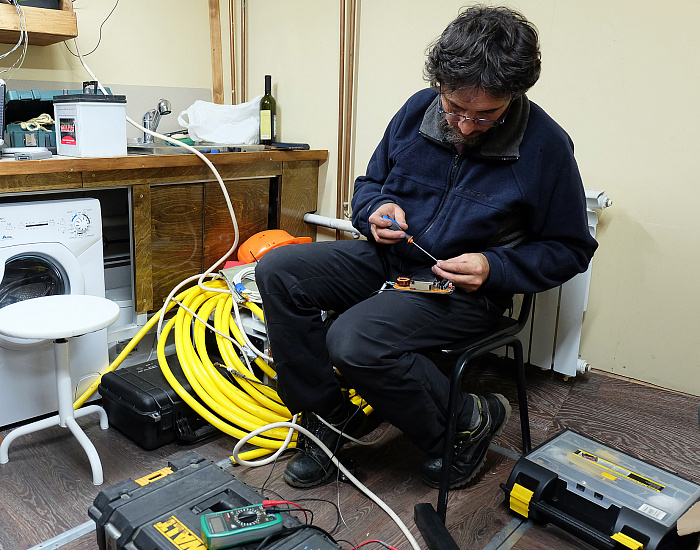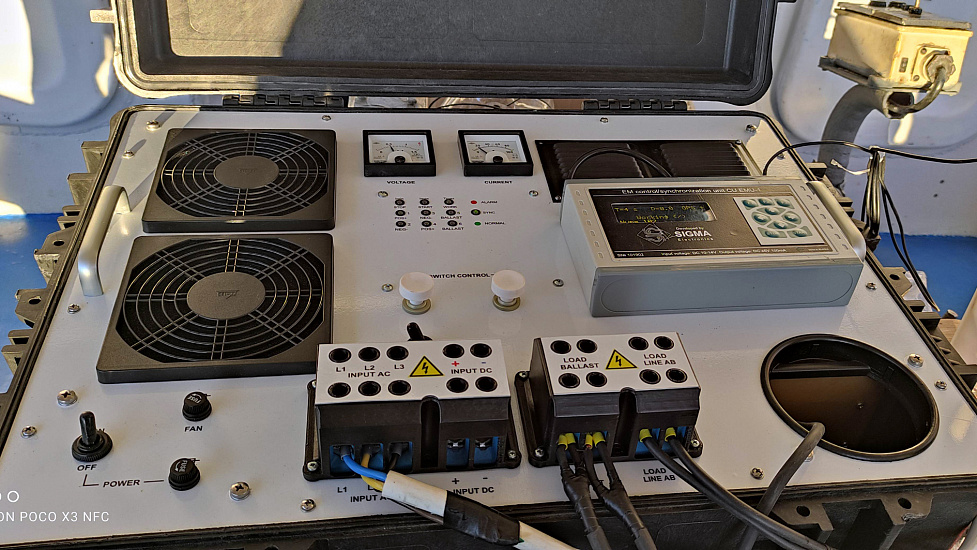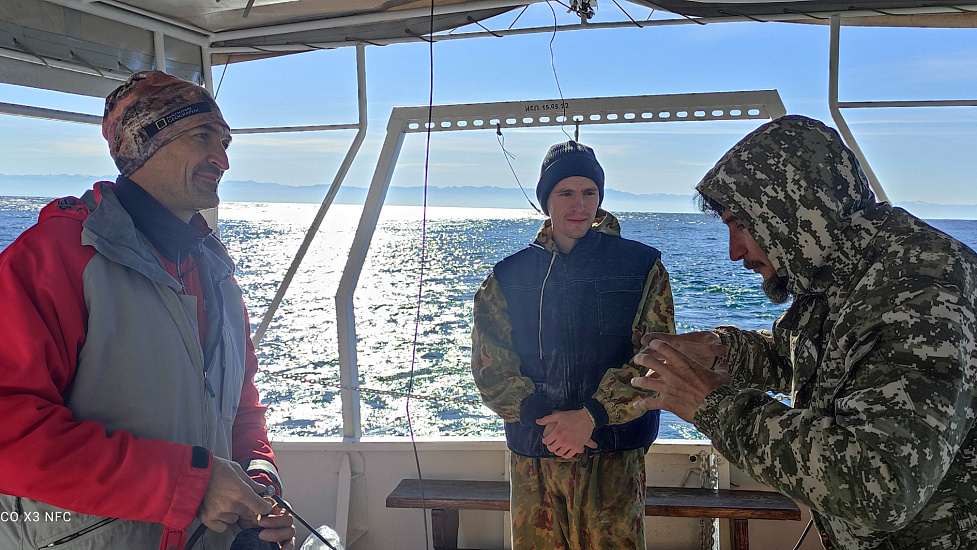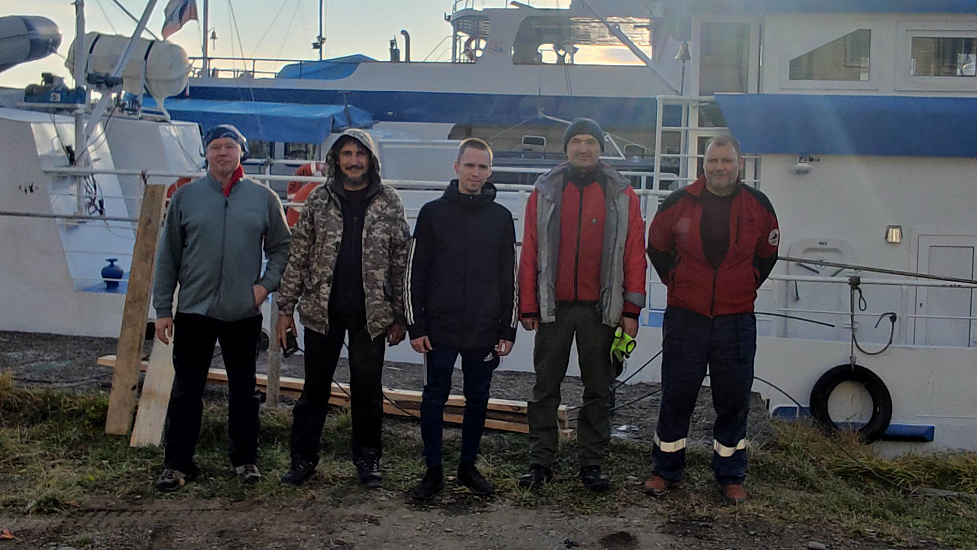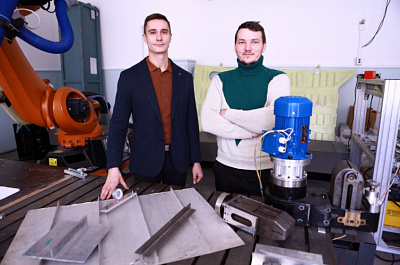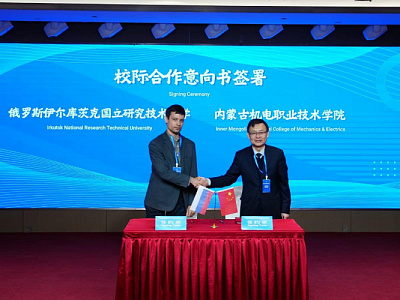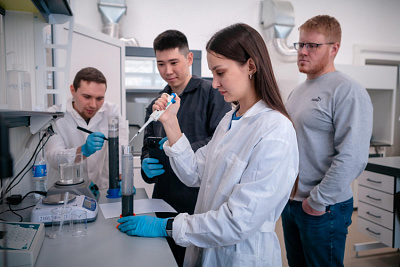The Siberian School of Geosciences tested an upgraded marine electromagnetic sounding system "Skat" on Baikal
Employees and students of the Siberian School of Geosciences tested a new version of "Skat" marine electromagnetic sounding system adapted for work in salt water on Lake Baikal. The device is designed to search for placer deposits in river deltas and on the sea shelf
As reported earlier, the Helios Innovation Company won a 20 million rouble grant to develop this project. The company is creating the new system in consortium with Irkutsk Polytechnic University within the framework of strategic project i.GeoDesign (Priority 2030 Program).
The team of researchers was headed by Yuri Davydenko, Director of Marketing and Project Education at the Siberian School of Geosciences. Sergey Yakovlev Karim Galimov, Mikhail Davydenko, and geophysics student Oleg Shcherbakov (3rd year) worked on the Baikal expedition. The trials took place on the vessel Papanin, rented fr om the Limnological Institute of the Siberian Branch of the Russian Academy of Sciences.
One of the main components of the modernised version of the Scat is a new generator KER-100 in a compact dust and water-proof case. It was developed by specialists from Helios, a member of the consortium established within the INRTU i.GeoDesign strategic project (Priority 2030 Program).
"We first tested the KER-100 generator under laboratory conditions at a current of 100 amps, then tested it in a natural environment. It worked in continuous operation, in motion, under vibration, etc. The new generator is more compact than its predecessors, with optimum power, easy to transport and mount," explained Yuriy Davydenko.
In addition, instead of steel feeding electrodes, this time the scientists used graphite plastic products which are more stable in salt water.
Using updated equipment we carried out site geophysical survey of submarine elevation Murinskaya Bank (opposite the township of Murino), the area wh ere there is a significant drop in depth from 8m to 900m. This allowed the researchers to estimate the depth method in different conditions and to assess the internal structure of Murinskaya Banka.
Detailed conclusions will be made after processing all measurements, but now the researchers note that the depth of the method has increased by about 20 percent.
As Yuri Davydenko stresses, the freshwater part of the tests of "Skat" marine electromagnetic sounding system can be called completed:
"Next year we will test it in sea salty waters. The power needed to overcome such an environment will be quite sufficient for us.
The developed components of the measuring system allow the Scat to be adapted to all natural conditions (fresh and salt water) and to almost any vessel."
The main advantage of the new towed system is that it can be used extensively, making surveys and design work more efficient when constructing pipelines and installing offshore platforms.
"Skat" has great potential for use in geotechnical surveys in large river deltas and for prospecting in rivers for alluvial deposits of precious metals and diamonds.
The device will make it possible to get the initial data for building up a three-dimensional model of distribution of resistivity and polarization characteristics of geological medium under water column, to reveal geoelectrical irregularities in the upper part of the section.
The Baikal test is one of the stages of the project "Development of a towed electromagnetic seabed sensing system for the shallow shelf with the ability to work in freshwater basins". The Helios Innovation Company (Skolkovo resident) received a grant of 20 million rubles from NTI for its implementation in 2021.
Scientists conducted their first tests in Baikal in August.


